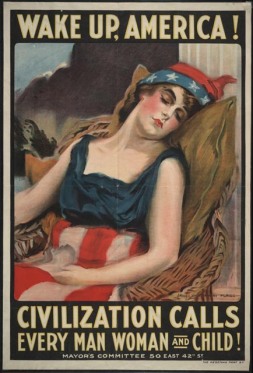The United States does not pay much attention to World War One. World War Two receives most of the attention in history books and all the attention in Hollywood. Even in the rare event that World War One is discussed, it is treated as a side issue or an antecedent to World War Two, which it is, but this is a simplistic approach to the global conflict which shaped the world in which we live. The American view of the Great War focuses on American neutrality, Woodrow Wilson’s desire to help Britain but putting that desire aside for the sake popular opinion and intervention in 1917.
 The History Channel documentary ‘World Wars’ is a good example of how we a nation views World War One. It was entertaining to see dramatizations of pivotal moments that shaped the times but the coverage of World War One began with Adolf Hitler’s life as a struggling artist and rejection by the Austrian army. The bulk of World War One focused on American figures, with the Bolshevik Revolution in Russia and Battles of Gallipoli and the Somme almost as afterthoughts. There was no coverage on the build up to war following the assassination, no analysis of figures other than those who became important in World War Two, and the Russian Revolution was mentioned only to establish the birth of the Soviet Union.
The History Channel documentary ‘World Wars’ is a good example of how we a nation views World War One. It was entertaining to see dramatizations of pivotal moments that shaped the times but the coverage of World War One began with Adolf Hitler’s life as a struggling artist and rejection by the Austrian army. The bulk of World War One focused on American figures, with the Bolshevik Revolution in Russia and Battles of Gallipoli and the Somme almost as afterthoughts. There was no coverage on the build up to war following the assassination, no analysis of figures other than those who became important in World War Two, and the Russian Revolution was mentioned only to establish the birth of the Soviet Union.
The American perspective of World War One is not wrong, but it is incomplete. As the same dynamics repeat themselves today and the world wonders if we are heading toward another global conflict, for Americans to really understand this part of history beyond where we came in is imperative to prevent us as a nation from repeating the same mistakes as 100 years ago. After all, those who do not know history are doomed to repeat it.
